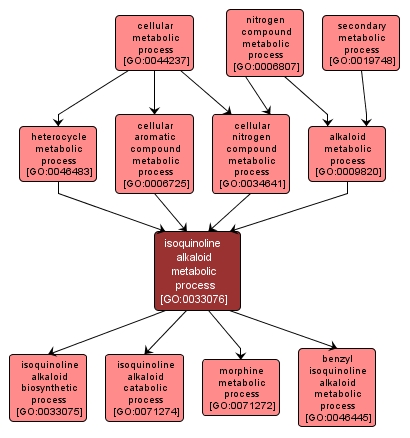| Desc: |
The chemical reactions and pathways involving isoquinoline alkaloids, alkaloid compounds that contain bicyclic N-containing aromatic rings and are derived from a 3,4-dihydroxytyramine (dopamine) precursor that undergoes a Schiff base addition with aldehydes of different origin. |














